In the eyes of many, the 80s belongs to pink scrunchies, hair spray, leg warmers, overdone make-up, all on a caucasian pin up styled mannequin or a caricature of blackness with a chunky chain, chunky rings, shell tops, a fresh cut. But if you actually lived it –or you’re too young to have lived it but you’re perusing youtube for proto-MTV nostalgia to “set yourself apart”– you’ve probably run into the staples of the pop diet at that time. Maybe it was Paula Abdul or Milli Vanilli…New Kids on the Block. These were blockbuster artists stamping the sound of high consumerism and culture changing wizardry that made international pop stars that could wave a finger and sell a SKU of pumps for the next 10 years. This kind of thing is now simply par for the course or maybe even cliche and limping its way out the door in favor of sleepy eyed, Grunge makeover types. However, what’s overlooked is where these teenaged upstarts got their sound; and, although, the cynic in me wants to point to whatever singer/songwriter was really burning the midnight oil, feeding hits to fresh faced Gap Kids (because, unfortunately, the writer often has a golden pen…but a face meant for radio), even these industry movers are not an island. Groups like Lisa Lisa and Cult Jam, Stevie B, Exposé, and Sa-Fire were like Moses coming down from the mountain with the ten commandments so the rest of the plebes could get on with it.
If the last sentence felt like a bit much, make no mistake: there is a little bit of heat on this fastball. When my boss, John “Gungie” Rivera, a DJ and businessman in his own right (who had a heavy hand in the culture and music of NYC in the 80s and 90s) called me to do this piece on Frankie Cutlass, I accepted and figured this would be another insightful interview that would inform my knowledge of NYC culture and leave me with a few nuggets of wisdom to save my own career from circling the drain. As I began to do some cursory research, I found myself going through a whole AA meetings’ worth of emotions. There was excitement, awe…and then a little bit of outrage: Frankie and the groups I just mentioned above were all part of a little known genre out of NYC called freestyle music; and if you go pull up a Sa-Fire track right now, you may find yourself in a bit of a tailspin wondering why you don’t know these artists. I asked myself the same question: How did the almost exclusively latin pop precursor to almost everything to come out of the 80s decade barely peek it’s head above the water before the torrent of crossovers and Pepsi can jingles swept it all into oblivion?
I’m not going to speculate. I’m not going to do that thing that millennials like me tend to do.
No.
Instead, I’m going to circle back, and give a legend his flowers. Maybe, I’ll give multiple legends their flowers. However you want to word it, I’m going to do my best to bring Mr “Puerto Rico” into 2023; so his contribution to the 3+ genres of music, to Puerto Rico, to Nuyoricans, to New York City itself cannot go back to being a footnote.
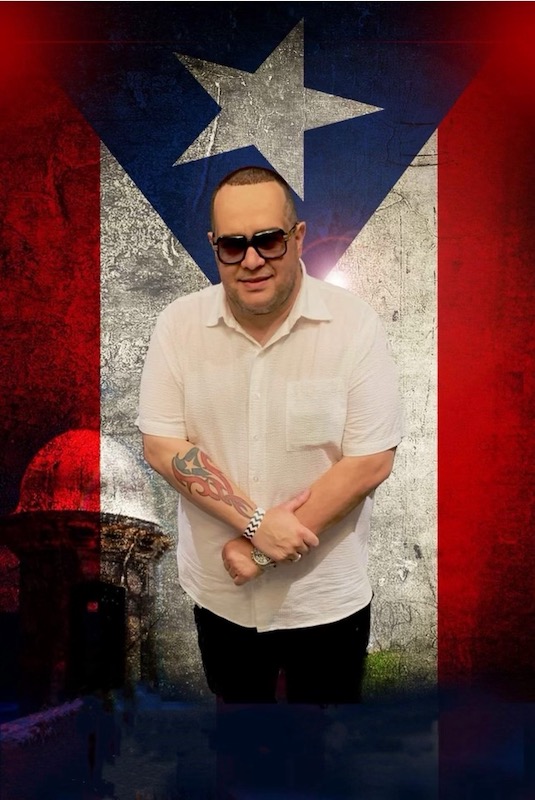
Daddy Yankee holds him in reverence. J-Lo opened her Super Bowl performance with his ‘94 anthem “Puerto Rico”. Marc Anthony was his friggin’ neighbor. Somebody reading this owes their breakout 80s-mid 90s hit record to him.
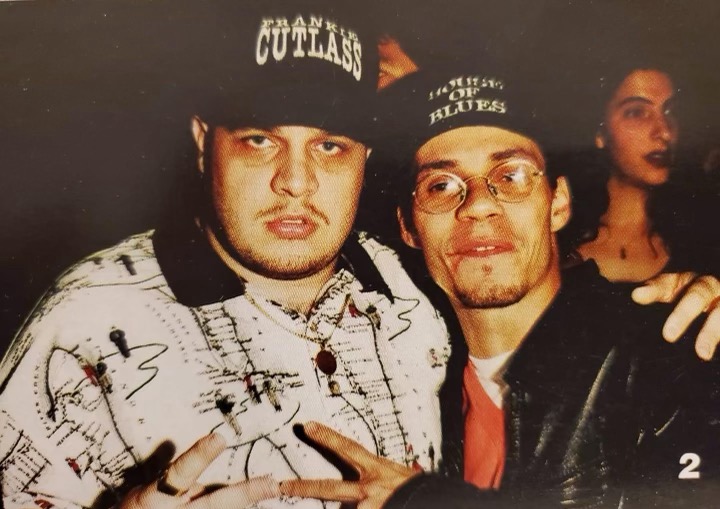
Shout him out on your next mixtape and cut the check.
THE BOSS, Frankie Cutlass.
Growing up in Spanish Harlem, Frankie had the itch early. There never seemed to be a time where he questioned where he was going –wherever the music was.
“A lot of my influences were the neighborhood DJs. I’d go hang by the park and watch these amazing DJs play the old school music. Also, my brother, Wilfredo, was a DJ. I’d hear him in the bedroom DJ-ing. I’d try to go in his room and hear him. Of course, I’d get kicked out because I was the young one.”
I even hunted down a funny story where he once wanted to play with his older brother’s DJ equipment while he was gone, but his bedroom door was locked. His mother did what all good parents try to do: make their children happy. So she slipped the lock on Wilfredo’s door and let Frankie in, warning him to leave everything as he found it and don’t break anything.
She saw the light in him when it came to music, and she fostered it anyway she could. Little did Frankie know that a mother’s love is so deep, it even runs counter to all rhyme and reason, in service to that love.
“I had a friend across the street from me who let me practice on his equipment every Saturday. I remember one Saturday I knocked on his door and he opened the door but he didn’t want to let me in. So I’m like, ‘What’s up? Why you not letting me in?’ and he said he had a girl there. I still wanted to practice but he was like ‘It’s not going to happen today…’.”
“So I went back home…I put my records down and I looked out the window and I was sad. I really wanted to practice. I looked forward to that. My mother walked into the room and sensed something was wrong with me. She asked what’s wrong, I said nothing…she’s like ‘why aren’t you practicing?’ So I told her what was going on…and she left the room.”
“She came back 20 minutes later and said, ‘Come on, let’s go! Tell me where to buy this equipment…you know that *she mimicked the sound of a DJ scratching on a turntable viga viga viga*’ ; and I’m like mom…we can’t afford that kind of equipment. She just had enough money to pay the rent and do a little food shopping but she said ‘Don’t worry about it. I’m going to jeopardize this month’s rent to buy you the equipment…’ I was happy but sad at the same time. We didn’t go get the most high end equipment but she got me something to get me through. To this day, every time I tell that story, it gets me a little emotional. She sacrificed for me.”
What is it in parents, that they can see so clearly when it’s real? I could feel my own vision blur, remembering my own mother’s sacrifice: a mid range drum set –my first– that she’d managed to hide from me all Christmas day. Patiently, she waited until I was distracted…probably watching tv upstairs…when I heard what sounded like someone fumbling their way around a drum set –the way novices take a drumstick and whack anything within reach at Guitar Center. I ran down the stairs, and there was my mother with a drum set disassembled in the living room.
I think she might’ve been even happier than I was.
Mothers.
From here, Frankie set out to push his limits with collaboration after collaboration within the freestyle scene, starting at 16 years old with a chance meeting.
“I remember being at a party in Manhattan. We would all hang there and play out cassettes of our mixes on a boombox. They knew I was a DJ and I was mixing records, editing records. So, I had a friend, David, he said he’d just come from a singer’s house by the name of Sa-Fire. She was looking for someone to do a remix to her song ‘Let me be the One’. He thought I should do it. So I ran home and made a remix and got it to her. It never made the final cut because the Latin Rascals were the kings of remixes so they got the job. I still ended up meeting her at a club and told her I was the guy who submitted a remix. She asked ‘Did you play keyboards on that?’ and I said yeah. So she mentioned that her brother was putting a band together and that I should come and try out. I went over there and tried out and I made it! My first record I produced with them was when I was 16 years old.”
His life became a regular circuit of producing, making remixes and DJing at the same clubs top DJs would frequent, such as the very man that made this interview possible, John “Gungie” Rivera. At the time, the two would cross paths as regular performers at the hottest clubs in NYC and developed a friendship and mutual admiration. This relationship would pay off dividends as Gungie became a club owner and promoter, regularly booking Frankie to play his spots.
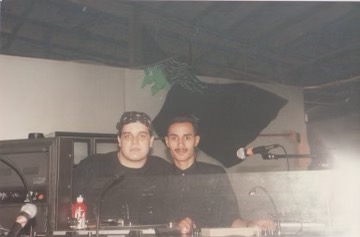
These initial experiences are telling when it comes to Frankie’s career, as the musical group Sa-Fire got him into (which became freestyle group, “& more”) –as well as the regular DJ-ing gigs– rooted him in the sensibilities of a musician. He learned to orchestrate and arrange a hit song; he learned to write a catchy hook; he learned to blend, stand out, and play his position; he learned how to read a room. That’s invaluable for a DJ. Doubt it? Start paying more attention to your local DJ next time you’re at a bar or a wedding. If he starts playing Buckcherry’s hit single “Crazy B****” while the bride and groom are cutting the cake, he’s probably the exact opposite of what Frankie is.
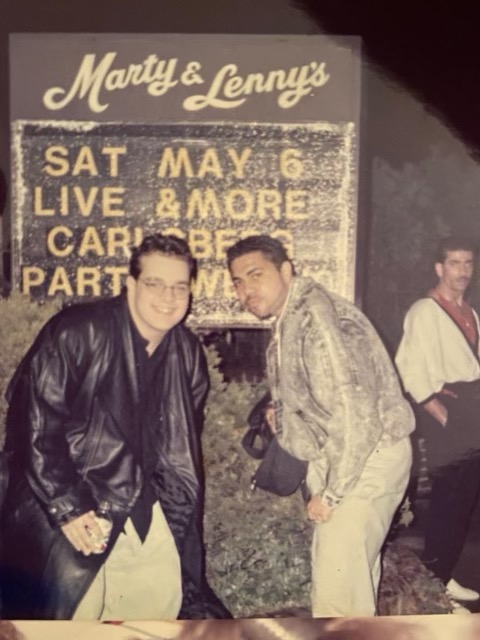
Recently, Frankie played DJ Negro’s 40th anniversary party is Puerto Rico, where he displayed this knack for hyping a crowd.
“I had a big following for my Monday night freestyle classics show in Puerto Rico so people were calling for me to come out and play. The problem is, I didn’t know any promoters but DJ Negro called me because he heard the buzz about me. He brought me out for his 40th-anniversary party. There was like 2,000 people there. There were like 5 DJs there. All different types of genres. So, I started playing freestyle and some people liked it but some weren’t moving. So I started DJing right, and…as a DJ I had to read the crowd…so i’m saying to myself “I have to make everybody move in this room.” So, I started playing my old school hip hop music after like 30 min of freestyle. I hit them with House of Pain, Black Sheep, A tribe called quest, rapper’s delight…It takes two by Rob base. Man, even DJ Negro jumped on stage and was like ‘Whoa! Take it easy!’”
To get that type of visceral reaction out of DJ Negro speaks volumes. It’s as though Negro thought the floor would levitate or crumble. Or at the very least, Frankie would put someone out of a profession that very minute. This talent has served him well in navigating a fickle industry and fickle public that follows the trend; and back in his freestyle days, his life path took a sharp left before he could catch his breath in the middle of the whirlwind of collabs and remixes he was doing.
“With freestyle, I got into it in 1986 when I was 16 but it started to take a nose dive in the early 90s. People in the industry were nervous like…what’s next? But I linked up with a guy named Carlos Berrios and we put a lot of hip hop in the freestyle. I remember working with this girl named Lisette Melendez and I remember mixing those elements. Eventually, this led to my hit record, ‘Puerto Rico’”.
A pivot like this is rare. Rick Rubin rare. But if you keep at the forefront of your mind that Frankie is a musician, such versatility is still rare but not as unexpected. You have to be adaptable as a musician. Any musical trend could dry up in a week. I still have a laugh about all the broadway bands, rushing into any Nashville bar that would have them, to cover Lil Nas X’s “Old Town Road” when it hit. Sure, there were a few hundred dollars a night to be had if you could fumble your way through the chorus; but if you didn’t have the chops to nail the chords and inflection of the new Luke Combs stadium country foot stomper or do a solid George Jones ballad, you’d better start mending bridges with that Shoney’s restaurant job you walked out of.
The rock star dream isn’t so cheap.
Frankie knew this; and made himself indispensable; especially, when his close friendship and partnership with Funkmaster Flex led to “Puerto Rico” being played on Hot 97, hip hop’s premier radio station. Flex brought Frankie into the fold of his DJ collective, The Flip Squad and brought him in for regular radio gigs.

Funkmaster Flex’s insight into the raw talent Frankie had was all the certification he needed to put his industry weight 110% behind Frankie’s iconic anthem. This track not only catapulted him into the consciousness of hip hop heads the world over, it also became an anthem for Puerto Ricans and Nuyoricans to this very day. It was a reminder that Puerto Ricans have been in the mix since day one –and that’s bigger than hip hop. I took courses in African music throughout grade school, going into college; and many of the rhythms you’d encounter in traditional African music were the same or very slightly altered in traditional Latin music from various cultures. Even many of the instruments are the same. The roots run deep. The idea that hispanic people were left out of the conversation at any point in time is asinine and short-sighted; but Frankie has seemed to transcend hip hop’s territorial lines, using his talent to shut mouths, much like Cold Crush’s turntable whiz, DJ Charlie Chase.
Frankie served up that history lesson in a way that was highly palatable and the industry took notice. Soon, he had hip hop’s A-listers knocking down his door to get on a remix of “Puerto Rico”; which, instead, led to his follow up hit “Boriquas on da set”.
Further accomplishments included working with freestyle legends such as Sa-Fire, K7, TKA, Lisette Melendez and George LaMond; then seamlessly shifting to hip hop and working with artists like Jadakiss, Mobb Deep, Redman, Fat Joe, Biz Markie, Shaggy, Uncle Luke, and the late great Notorious B.I.G who was also notorious for being hard to land time with as a producer.
He even got the chance to honor the memory of his late father by working with an idol him and his father shared and carried in high regard: the king of Cuatro and preserver of traditional Jibaro, Yomo Toro.
One has to stand back and marvel at the reach of one man. Chart topping from one genre to another organically. None of it was watered down. Frankie was in high demand because he spoke the language of any genre he took part in. He was never a tourist or a passerby. He was always at home.
And where is he at today? He’s doing a victory lap. He’s repopularizing freestyle music through his high profile DJing gigs and Monday Freestyle Classics shows. He’s become NYC Mayor Eric Adams’ go-to DJ for high profile events, including the National Puerto Rican Day Parade. Jennifer Lopez used snippets from his hit “Puerto Rico” in her Roberto Clemente Stadium performance, as well as her 2020 Super Bowl performance. He’s reconnecting with artists he helped build and develop, which bodes well for the next few years of his discography, if his past is any indicator.
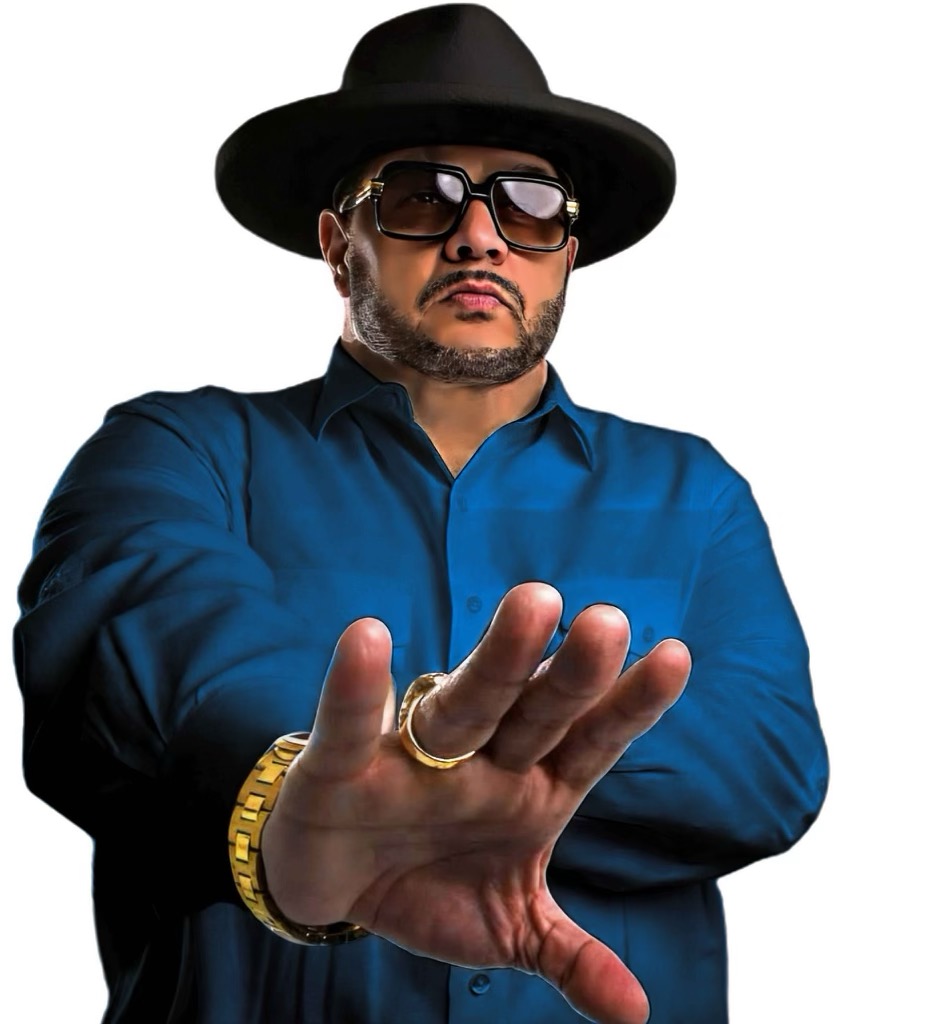
It’s like success is a mere exercise of muscle memory, or a reflex.
When asked what his advice would be to any artist who would like to accomplish even a tenth of what he has, he was succinct, direct, and (especially to my liking) not full of the cornball fluff takes anyone can get from a celebrity laden YouTube motivational video collage:
“Do something different. Do something magnificent. Never stop. Work harder! And don’t get down on yourself. Never ever be your own biggest doubter. Always be willing to learn more…Oh and get a lawyer!”

